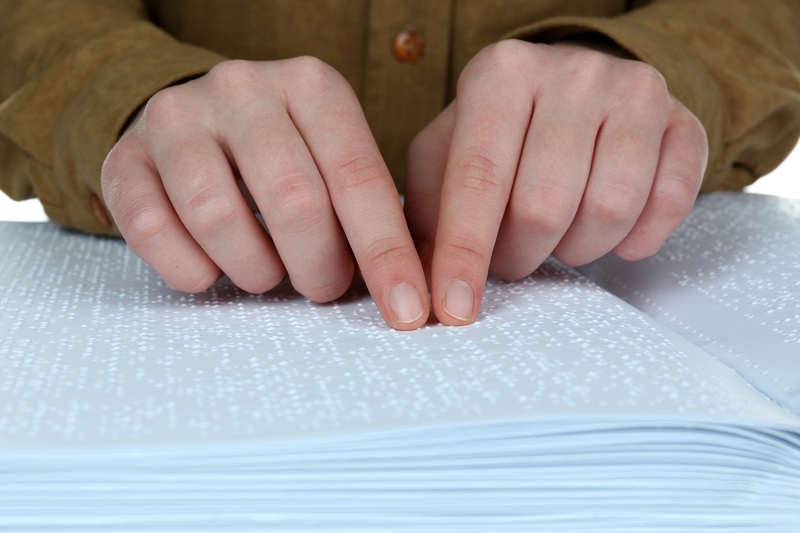Vision Impairments
Vision Impairments
Introduction to Vision Impairments

While visual impairment is a term that describes a number of conditions, including near- and far-sightedness, macular degeneration, and blindness, it generally refers to the consequence of an eye disorder or condition. In 2012, it was reported that 534,476 people ages 0-18 had vision difficulties, while 59,193 people ages 0-21 were legally blind (American Foundation for the Blind, 2012).
The degree of vision impairment that a student experiences can vary greatly, but is generally dependent on the student's eye condition, the part of the eye or visual system that is affected, and how much glasses, contact lenses, or surgery can help ("NICHCY Disability Fact Sheet," 2012). However, it is important to note that students classified as "blind" are not necessarily unable to see everything, and may be able to see things like light and colors. It is better to ask the student what you can do to assist them, as opposed to making assumptions about their needs, because visual impairments can vary so greatly.
Now watch this video (3 min, 16 sec) of a library worker giving a tour of Pasadena Public Library, CA, with your eyes closed to get a sense of what it would be like for a student with a visual impairment in your library.
Now watch the video again with your eyes open. Did you figure out what the staff member doing or where she was leading you? Imagine your student with a visual impairment is experiencing something similar to what you just did. How would you accommodate this student? Take a look at a few of our suggestions here.
Accommodations in the Library
This activity shows the importance of vision to learning. Students with vision impairments will be more reliant on their other senses, as well as different tools and materials, in order to understand the world around them. As librarians, it is essential to provide these students with direct, hands-on experiences, time to explore, and detailed, verbal descriptions of activities.
Many libraries accommodate students with vision impairments by providing assistive technology, such as devices that allow people to hear or enlarge computer text. To learn more about this, please visit the assistive technology module.
Other accommodations and advice, as suggested by the Association of Specialized and Cooperative Library Agencies, include:
· Have a wide variety of formats, including braille, large print books (with font larger than size 14), ebooks, audiobooks.
· Ensure that signs have large print, high contrast text, and incorporate braille where possible
· Speak directly to the student with a normal tone of voice.
· Make sure the library is well-lit.
· Identify yourself and others in a group, and be as descriptive as possible about what is going on.
(Association of Specialized and Cooperative Library Agencies, 2010).
References
American Foundation for the Blind. (2012). School experience for children and youth with vision loss. Retrieved from http://www.afb.org/info/blindness-statistics/children-and-youth/school-experience/235
Association of Specialized and Cooperative Library Agencies (ASCLA). (2010). Blindness and low vision: What you need to know library accessibility tip sheet 14. Retrieved from http://www.ala.org/ascla/sites/ala.org.ascla/files/content/asclaprotools/accessibilitytipsheets/tipsheets/14-Vision.pdf
FamilyConnect. (2014). What's different about the way visually impaired children learn? Retrieved from http://www.familyconnect.org/parentsite.aspx?FolderID=21&SectionID=75&TopicID=351&DocumentID=3880
National Dissemination Center for Children with Disabilities. (2012). visual impairment, including blindness. Retrieved from http://nichcy.org/disability/specific/visualimpairment#ref10
